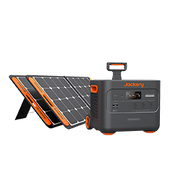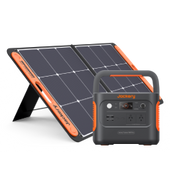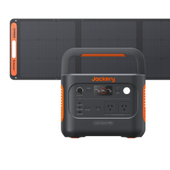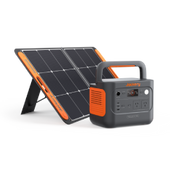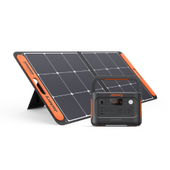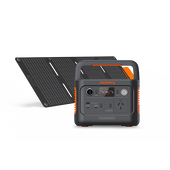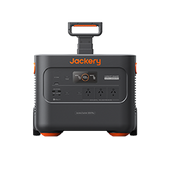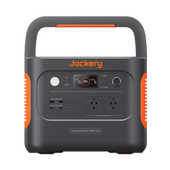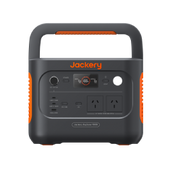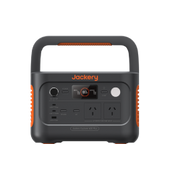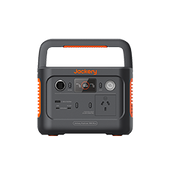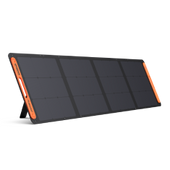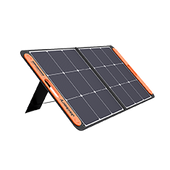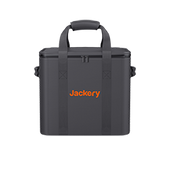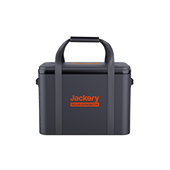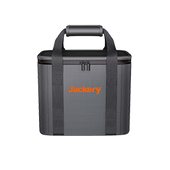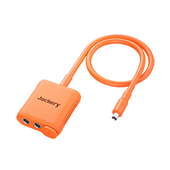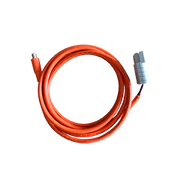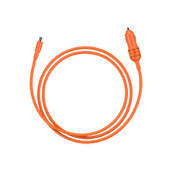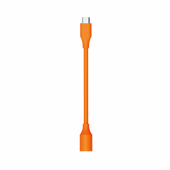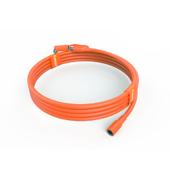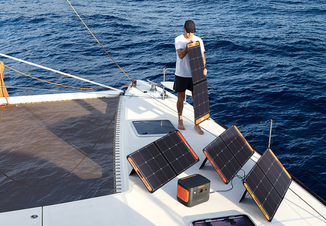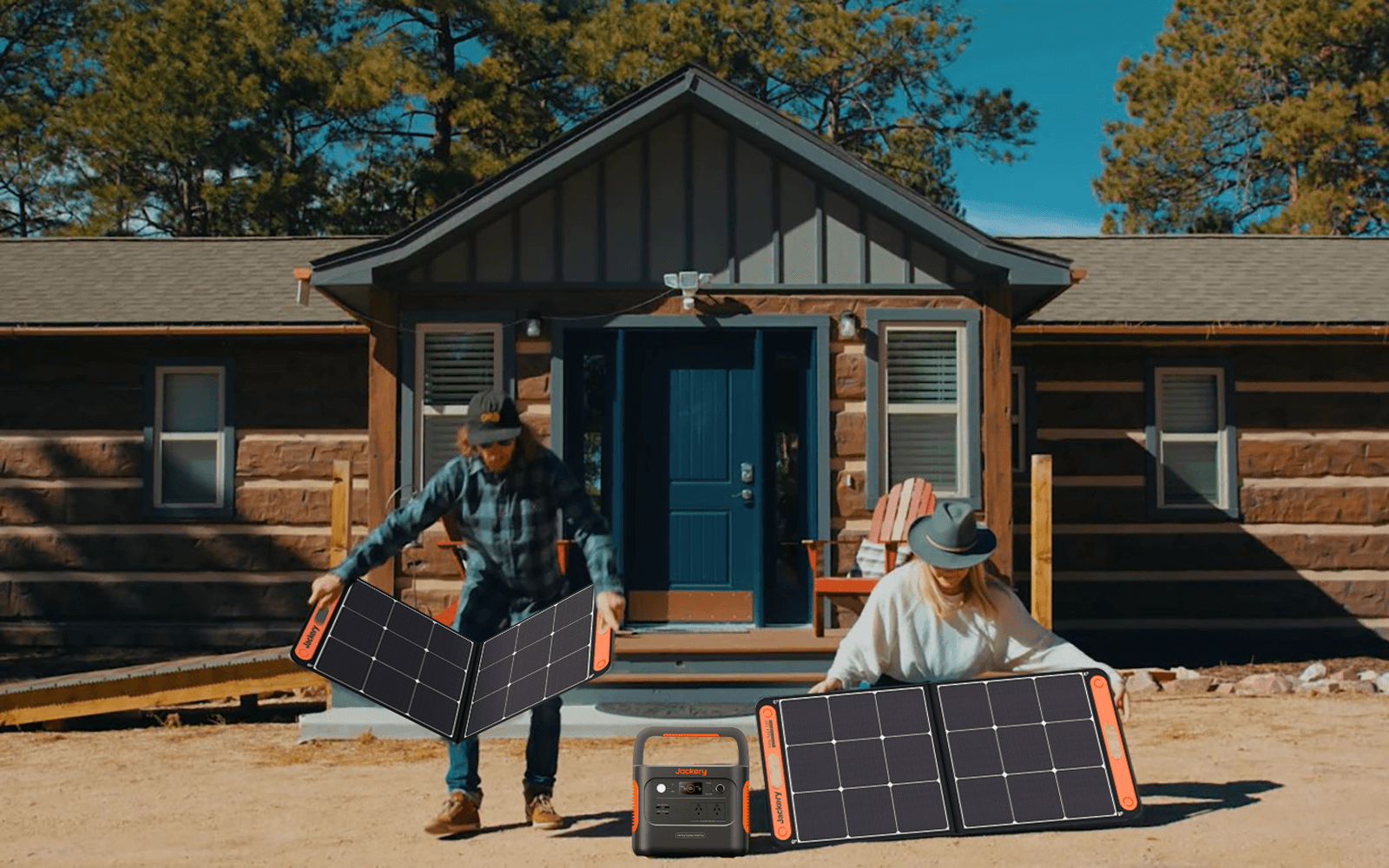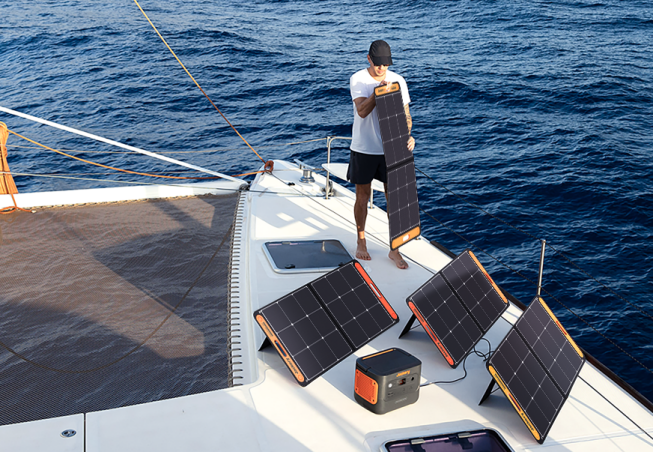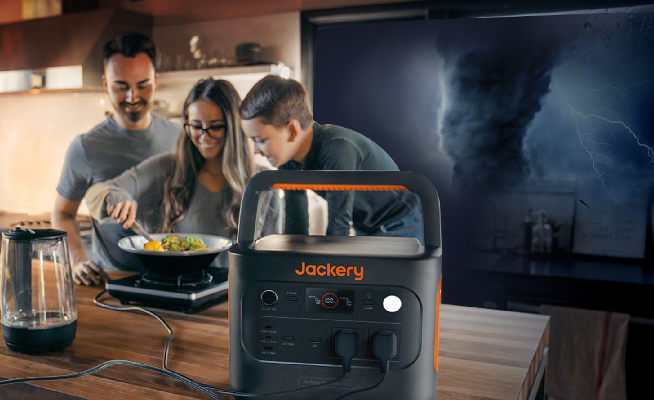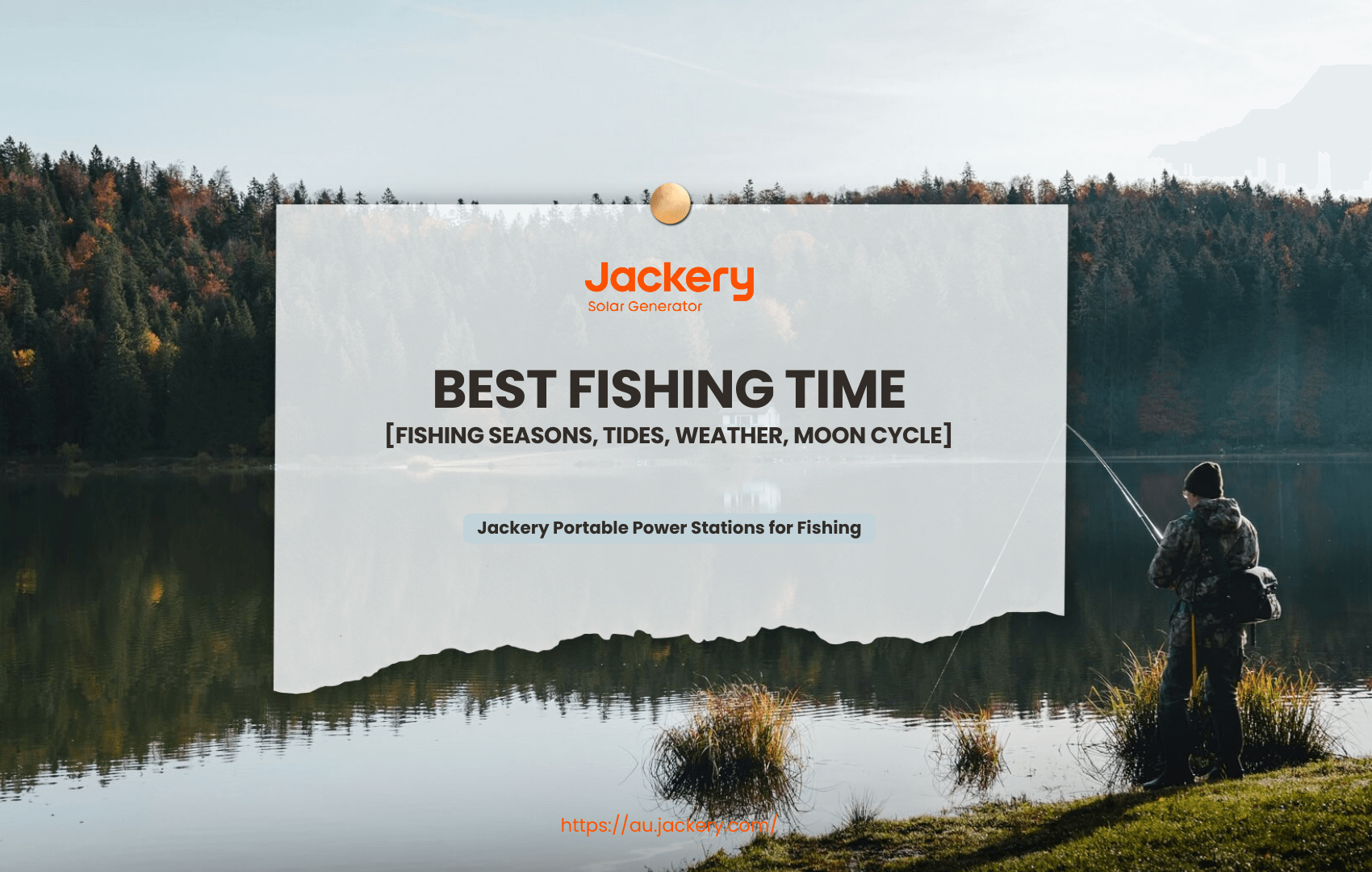|
Key Takeaways: |
|
• Fishing Knots help secure lines, preventing fish from getting away and creating lures and bait rigs. • There are various fishing knots to choose from to serve different functions. • This guide teaches you how to tie fishing knots and their applications and advantages. • The bad Knot unravels or slips under heavy tension, while the excellent knot does not unravel or slip (it breaks before unravelling). • The type of knot you use primarily depends on the kind of bait you're using. • For fishing in Australia, we recommend Jackery Explorer 300 Plus and 600 Plus to charge essential electronics on the go, such as phones and electric fish finders. |
What Is a Fishing Knot?
A fishing knot is used to fasten a lure, hook, or swivel to a fishing line. Although there are other fishing knots, the better Clinch Knot, Berkley Braid Knot, Uni Knot, Loop Knot, and Palomar Knot are the most widely used. Selecting the appropriate knot for your fishing style is crucial, as each has pros and cons. The simplicity of tying the knot is an essential component. If this is your first time fishing, select a knot that is relatively easy to tie.
Why Fishing Knot Matters
One may need to know how to tie a fishing knot for several reasons. To begin with, it can be a helpful ability when out on a boat because it can be used to fasten lines and keep fish from escaping. Furthermore, knots can secure equipment or gear and make lures and bait rigs. Even though there are more intricate knots, mastering a few fundamental knots will help you adjust to various circumstances.
Going fishing is a fun way to spend time outside with family, friends, or even yourself and breathe fresh air. However, it's not fun if you don't catch any fish. You can improve your skills and understanding, but your gear is still necessary. Inferior gear is the fastest way to ruin a fishing day.
|
Why Fishing Knot Matters |
|
|
Strength & Reliability |
An effective fishing knot must possess sufficient strength to endure the force a hooked fish exerts, thereby averting line breakage during the struggle. |
|
For Many Uses |
Various knots are engineered for specific circumstances, such as joining lines of disparate thicknesses, securing hooks of varying sizes, or connecting to leaders. |
|
Minimise Fishing Line Damage |
Adequate knot-tying techniques can mitigate damage to the fishing line, preserving its integrity. |
|
Increase Confidence |
Proficiency in tying an array of knots can enhance anglers' confidence when fishing under diverse conditions. |
Different Types Of Fishing Knots
Certain knot styles are designed to be used with particular fishing techniques or to secure pieces, lures, hooks, lines, ropes, and even specific kinds of lines with unique properties. Others have trustworthy and effective strength levels for large, prickly fish with extra force.

Albright Knot: This knot has an angled bend and can be tied easily to an average degree of difficulty. You can tie two lines or ropes together with this knot. Due to their more slick surfaces, monofilament lines and ropes are typically used in these knots for improved stability and grip.
Arbour Knots: This is a typical fishing knot used to secure the end of a fishing line to your reel's arbour. This knot is simple to tie and is frequently used while fly fishing with a bit of bait. This applies to freshwater and saltwater fishing alike.
Bait Loop: Often employed for softer or looser baiting, this loop is sometimes called the Egg Loop or the Bumper Knot. Several fishing knot tips advise this knot for looser or fragmented bait, like fish eggs or a patch of little fish. In practice, it's challenging to tie this knot.
Double Uni Knot: This fishing knot, which can tie two lines or ropes together or, more frequently, to mend broken fishing lines, is vital at a moderate to average level.
FG Knot: It is regarded as one of the most muscular and easy to tie. This knot is incredibly adaptable and works with the most common line types, including braided, fluorocarbon, and monofilament.
A half-blood knot, or a Clinch Knot, is frequently used to secure a line to a lure. Blood knots are what these two knots are. Though they were once partly blood, they are regarded as one of the most vital knots.
Better Clinch Knot: Also called a Salmon Knot, this is a practical binding for attaching a line to swivels, clip-ends, fishing lures, and fake fly lures. It's relatively easy to tie and has good strength. It works with braided, fluoro, and mono lines like the FG knot.
Loop Knot: There are various varieties of loop knots, but they are all effective at fastening the line to your rig. Each has varying degrees of difficulty, from easy to normal to moderate.
Five Best Fishing Knots: How To Tie
The following are the five best fishing knots; you may want to know how to tie and use them.

1. Improved Clinch Knot
One of the most popular fishing knots is the enhanced clinch knot. Before we discuss its uses and benefits, here's a short look at how to knot one.
How to Tie: An enhanced clinch knot may be tied in four steps. The end of the line must first be passed through the hook or swivel's eye. Pull out approximately six inches of the line once it has passed through, then double it back against itself with five to seven twists. The end of the line must pass through the little loop that forms right above the eye.
After that, complete the large loop, ensuring the coils don't cross over. After the end of the line has been passed through the loops, pull the tag end and wet it. Pull the mainline against the eye in that direction to tighten it. Once it reaches its tightest point, cut off any excess.
Application: An enhanced clinch knot, one of the most popular fishing knots, offers a productive means of fastening a fishing line to a hook, lure, or swivel. It is a commonly used tool by anglers to secure the fly to the leader. However, if you use a test line heavier than thirty pounds, experts advise against an upgraded clinch knot.
Benefits: An enhanced clinch knot is ideal for attaching a small diameter tippet to a strong wire hook. Hold the line steady when you hook a healthy fish and apply the additional last tuck.
2. Palomar Knot
When made right, the Palomar Knot is very close to being a 100% knot. When the hook or bait goes through the loop, ensure the whole knot closes up. Many pictures of this knot make it look like the loop part touches the bottom of the hook or lure's eye.
How to Tie: First, double up around six inches of fishing line and thread it through the hook's eye to create a Palamar knot. Next, knot the doubled line with an overhand knot. Let the hook hang slack, and try not to twist the line. Pull the loop's end to cover the lure or fish hook completely. Finally, lubricate and tug both ends of the line to draw up the knot. Finally, cut off any extra.
Some other methods of tying the Palomar knot include positioning the last loop against the hook shaft instead of dragging it down and around the bight. This allows one to restrict the hook's range of motion.
Application: The Palomar knot is an easy knot to tie. Anglers use it to fasten a fly to a leader or tippet or a line to a hook. Many seasoned fishermen regard the Palomar knot as one of the most robust and dependable knots in fishing.
Benefits: The Palomar loop's simplicity of tying is by far its most significant practical benefit. Anglers with reasonable competence can make a Palomar knot without seeing the line or hook.
3. Uni to Uni Knot
This fishing knot, called a "Uni to Uni Knot" or "Double Uni Knot," joins two lines by tying two separate Uni knots back-to-back. It's a strong and reliable way to connect a leader line to a central line, especially when using different types of lines, like braid to fluorocarbon. It's a simple but effective way to join lines with different diameters.
How to Tie: To tie a uni knot, the line must be fed through the hook's eye and doubled to form a circle. After creating the circle, tie the uni knot by passing the tag end through the loop and making six loops around the double line. Then, wet the rope and tug to make the knot tighter. Pull the mainline again to slip the knot to the hook's eye.
Application: A uni knot is the most effective method when an angler wants to join the Superline to the leader material. It works well as a knot for tying a hook and when the line has to be attached to a reel. The uni knot is incredibly flexible and practically effortless to tie.
Benefits: A uni knot's versatility stems from its ability to be used for end-to-end connections, loop creation, and snelling. An experienced angler should be able to make a uni knot with ease in the dark. Its most impressive benefit is that it preserves a significant portion of the line strength.
4. Snell Knot
The Snell Knot is a fishing knot that secures a fishing line directly to the hook's shank rather than merely through the eye, facilitating a straight-line pull on the fish when hooked. This knot is especially advantageous for circle hooks and scenarios requiring line alignment with the hook's shank; it was initially developed for eyeless hooks but remains prevalent today.
How to Tie: The leader's end must first pass through the hook's eye to make a Snell knot. In the same direction, pass it through the eye once again. Now that the end has gone through the eye twice. Secure a firm hold on the hook eye and both line segments.
At least seven or eight times, wrap the loop around the hook's shank. The diameter of the loop remains big. Pulling on the upright end will cause the loop to shrink. To ensure the knot is securely fastened, wet and pull both ends. Trim the end to finish.
Application: A fisherman may attach the leader or tippet straight to a baited hook by making a snell knot. Although its initial application was with eyeless fishing hooks, a snell knot is now used with eyed hooks. It is a great way to match the leader or fishing line with the hook shank.
Benefits: Since snell knots enable the leader or tippet to be tied directly to a baited hook, anglers favour them. Among the earliest fishing knots is this one. Snell knots provide a dependable connection that keeps the fishing line strong. These knots work exceptionally well when the eye's thickness is more significant than its diameter.
5. Bimini Twist
The Bimini Twist is a fishing knot that forms a loop at the terminal end of a line. It is a robust knot frequently employed in trolling, offshore, and large game fishing. Additionally, the knot is advantageous for attaching a light tackle line to a leader.
How to Tie: Start with the line's long tag end to knot a bimini twist. Make a loop with it first, then twist it at least twenty times. Now, squeeze the twists together using your fingers. As a result, the long tag end will loop firmly around the twists. After tightly wound, you must grasp and bind the knot using a half hitch and a multi-loop hitch. The tag ends should now be tucked between the lines, tightened, and trimmed.
Application: Bimini twist knots are handy for creating double-line solid leaders and connecting loops to loops. The bimini twist for double-line leads produces a powerful loop. The effect of the number of twists on the load-bearing capability of the line must be carefully considered. In the next section, we went into more depth about it.
Benefits: As previously mentioned, the Bimini twist knot is ideal for forming a strong double-line leader and connecting loops to loops. Another well-known feature is the bimini twist's ability to support a weight. Because of the knot's structural design, the tension is more evenly distributed along its length. Experts frequently contrast the Australian Braid's effectiveness with it.
You can learn details from this fishing knots guide from HMY.
How to Determine a Fishing Knot?
It is crucial that we all comprehend the various knot strength categories before moving on to the knot strength results:
Bad knot untangles or slides when stressed excessively.
Good knot breaks before it unravels and doesn't unravel or slide.
Great knot has a more excellent breaking point than a "good knot" and does not unravel or slide.
How To Determine a Bad Knot
Because a faulty knot always leaves behind the telltale indication of trouble—the curled tag end—it is pretty easy to spot. The curly tag end you might have seen following a break-off indicates that the tied knot was either poorly done or poor quality. Therefore, do not tie the same knot in the same way if you ever see the curly end after a break-off since it will probably happen again.
To identify a "bad knot," observe indicators such as pronounced unevenness in the wraps, loose or inconsistent tension, discernible gaps between the rope strands, challenges in tightening, a knot that readily unravels under slight pressure or a knot that severely impairs the rope's functionality due to its configuration or positioning; if uncertain, comparing it to a correctly tied knot of the same variety may assist in recognising potential deficiencies.
How To Determine a Good Knot vs a Great Knot
To distinguish between a good and a great knot, they must be purposefully broken in a controlled test to determine the amount of stress they can withstand before breaking.
Since it takes time and work, most fishermen neglect this crucial component.
A great knot preserves a significant proportion of the rope's initial breaking strength. In contrast, a satisfactory knot may retain strength but could forfeit a greater extent of its integrity when knotted.

What Baits to Use with Different Kinds of Fishing Knots
The quality of your knots may make a significant impact when fishing. Ultimately, an inadequately knotted knot is more likely to come loose, resulting in lost time and an untied catch. However, choosing the right knot might be challenging, given the abundance of options. Fortunately, your knot choice will mostly rely on the bait you're using.
A Slip knot is the best option for live bait, including worms, minnows, or nightcrawlers. This is an easy knot to tie, with just enough give to keep the bait from coming loose from the hook.
A Uni knot with synthetic lures, such as spoons or spinners, is the finest choice. This knot is more durable and less prone to unravel than a slip knot.
A Clinch knot with flies or other small baits is the finest option. This knot secures the bait securely without causing any harm to it. Increase your odds of successful fishing by knitting the appropriate knot for your bait.
Jackery Portable Power Stations for Fishing
Every angler should learn how to tie the best fishing knot since it guarantees a strong bond between your line and hook or bait. The proper equipment and setup are crucial for a good fishing excursion, regardless of your preference for the traditional Clinch Knot or the adaptable Palomar Knot.

Don't ignore the importance of a portable power supply when fishing outdoors.
Timing is crucial when fishing, and understanding the ideal times to fish can mean the difference between a slow day and a successful catch. Arm yourself with Jackery Solar Panels and Jackery Portable Power Stations to ensure your equipment, such as lights and fish finders, is always available when the fish bite.
You may fish at sunrise, sunset, or even late at night without worrying about running out of power, thanks to Jackery's clean, portable energy. With Jackery by your side, you can get the most out of every fishing trip.
Jackery Explorer 600 Plus
Go with the Jackery Explorer 600 Plus Portable electricity Station for uninterrupted electricity during blackouts. Its UPS feature guarantees a changeover time of less than 20 ms, offering dependable backup for necessary devices such as your phone, tablet, camera, fish finder, etc. Its 800W power and 632Wh capacity make it suitable for fishing trips.
With quick charging capabilities, such as a one-hour Emergency Super Charging Mode, the Explorer 600 Plus is a lifesaver in emergencies. With 4000 cycles, the LFP battery guarantees steady performance for more than 10 years of operation.
With its silent operation mode (≤22dB), you will never worry about disturbing the fish. Also, the Explorer 600 Plus was designed with safety in mind and is a reliable and secure option for any situation with the shockproof and fireproof construction.

|
Fishing Electronics |
Explorer 600 Plus Working Hours |
|
Electric Fish Finder (100W) |
5.1H |
|
Portable Cooler (200W) |
2.5H |
|
GPS Device (60W) |
8.4H |
|
Phone (10W) |
50.6H |
|
Camera (150W) |
3.4H |
Jackery Explorer 300 Plus
The Jackery Explorer 300 Plus Portable Power Station redefines portability and performance. Weighing just 3.75kg, this ultra-lightweight power station is designed for maximum convenience, allowing you to carry it in your backpack for fishing trips easily. Its compact size doesn't compromise its power, offering a 288Wh capacity and 300W output to keep your essential devices running smoothly.
Equipped with cutting-edge features, the 300 Plus ensures versatility for various scenarios. Its dual USB-C ports with up to 100W output support fast and simultaneous charging, making it ideal for electric fish finders, tablets, and smartphones.
With four charging options—solar, AC wall outlet, car port, and USB-C—you'll always have a way to recharge, whether at home, on the road, or in the wilderness. Plus, it's whisper-quiet and completely emission-free, ensuring it is both eco-friendly and convenient.
The Explorer 300 Plus is built to last, featuring an LFP battery with an impressive 10-year lifespan and over 3,000 cycles to 80% capacity. Safety is at the core of its design, with advanced ChargeShield Technology offering 52 layers of protection against overvoltage, short circuits, and more. Whether camping, travelling or preparing for emergencies, this portable power station provides reliable and safe energy solutions that adapt to your lifestyle.

|
Fishing Electronics |
Explorer 300 Plus Working Hours |
|
Electric Fish Finder (100W) |
2.4H |
|
Portable Cooler (200W) |
1.2H |
|
GPS Device (60W) |
4H |
|
Phone (10W) |
24H |
|
Camera (150W) |
1.6H |
Best Fishing Knots FAQs
The following are the frequently asked questions about the best fishing knots.
1. What is the weakest knot?
With a 60 to 65 per cent success rate, the clove hitch is the weakest of the popular climbing knots. However, remember that even a clove knot would break at 3,600 pounds because contemporary climbing ropes have tensile strengths of up to 6,000 pounds.
2. Do knots weaken the fishing line?
A basic overhand knot reduces line strength by around 50%. Learn how to tie knots. Grab a piece of fishing line, a hook buried in a cork or with the point chopped off, and begin practising till you can tie every knot properly; practice.
3. Why do you wet a fishing knot?
The traditional technique for cooling off has always been with water; the same is valid for fishing lines. Moistening your fingers while tightening them will also reduce the heat produced by friction and cool your knot.
4. Why do my fishing knots keep breaking?
Two possible causes of slippage include tying the incorrect fishing knot for the type of line being used or tying the correct knot incorrectly. Two other factors can lead to breaking: When a knot is tied incorrectly, it breaks under tension that is not more than its potential strength. Alternatively, the pressure on the knot surpasses its strength.
Final Thoughts
The quality of the knots we use is one of the many variables that determine whether you land the fish of a lifetime that you hook, and it is something we have complete control over. Therefore, we must use the best fishing knot for each connection to have the maximum line strength overall. Be aware of the knot possibilities available for each connection need, as there isn't (and never will be) a single fishing knot that works with all line kinds and needs.

